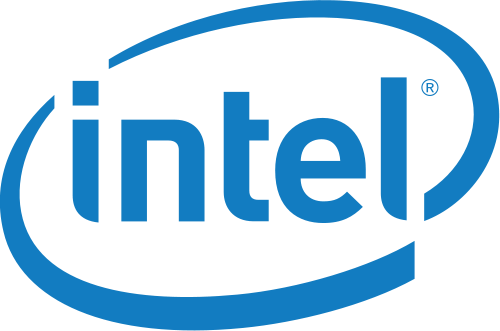
Intel (NASDAQ:INTC) is often seen as a laggard in the AI chip race, facing mounting issues. These issues vary from falling sales, a lack of profitability, and a recently-announced 15,000-job cut. The chip maker eliminated its dividend to cut costs. Accordingly, it should be no surprise to see INTC stock down more than 55% on a year-to-date basis, clearly lagging its peers in this space.
Most growth investors have pivoted their focus to higher-growth semiconductor players like Nvidia, AMD, Taiwan Semi or others with some level of AI chip exposure. And while Intel is working on its next generation chips, the company’s status as a leader in terms of innovation in this space appears to have been firmly eroded.
The company is now focusing on cutting $10 billion in costs by 2025, and improving its balance sheet and earnings profile in a bid to remain viable. Amid this stark drop, and all these previously-mentioned headwinds, let’s dive into whether investors may want to consider Intel at these levels.
Key Points About This Article:
- Intel is a chip maker that has been hit hard by a range of headwinds unique to its core business as a legacy chip maker.
- The company is looking to innovate forward, but it’s clear that the competition is moving much faster, leading to serious investor doubts around this name over the long-term.
- If you’re looking for some stocks with huge potential, make sure to grab a free copy of our brand-new “The Next NVIDIA” report. It features a software stock we’re confident has 10X potential.
Disappointing Earnings and Guidance

Once a dominant player in the semiconductor sector, Intel’s aforementioned challenges have led to very disappointing Q2 earnings and a weak Q3 outlook. The stock’s recent underperformance reflects investor dissatisfaction amid intense competition in this sector. Though restructuring and cost-cutting may offer turnaround potential, it’s growing increasingly clear that analysts and investors are now erring on the side of caution.
There are simply a myriad of execution risks and market share losses to contend with, before investors can wrap their heads around any sort of turnaround story. That said, it’s clear that success in Intel’s IDM 2.0 strategy will be crucial for the company’s future.
The company’s revenue declined 1% in its second quarter, missing analyst expectations. Adjusted earnings per share also fell short, coming in at only $0.02. Estimates had pegged the company’s adjusted earnings around $0.10, so this was a rather large miss, and highlights profitability concerns. Unsurprisingly, Intel’s stock price plunged following the results, though it’s unclear if this was a “kitchen sink” kind of quarter some value investors could get excited about.
Now, Intel’s stock price has recovered slightly from the beginning of the month, suggesting much of the investor dread around future earnings may be priced in here. But as Intel continues to lose market share in the server CPU and AI chips space, and fails to gain traction in its AI-focused products, there’s really not a lot to like on this front.
Intel’s Rebound Plans

Intel’s leadership team responded to its challenges this past quarter, announcing some bold measures. First, the company announced a $10 billion cost-cutting plan involving a workforce reduction of 15%. Dividends will be suspended from Q4 2024 onward to provide the company some leeway to better streamline operations, especially in critical areas.
Intel’s CEO Pat Gelsinger noted how the depth of these workforce reductions, and how hard it was for the management team to enact these measures. That said, it’s becoming clear that focusing on growth strategies with a vastly reduced workforce could be difficult. In order for tech company to reclaim its leadership in processing technology and develop high-end packaging and foundry services, significant expenditures will be needed.
That’s perhaps the impetus behind Intel’s $10 billion cost-cutting plan. This turnaround strategy could rustle in enhanced profitability. And without stronger operating margins (Intel’s operating margin is very narrowly positive, while other industry leaders are above 20%), it’s going to be hard to justify any sort of positive outlook from here.
Buy, Hold or Sell Intel?

Despite bold recovery efforts, significant execution risks and competitive pressures persist for this major chip maker. In my view, Intel’s risk profile has shifted substantially out of investors’ collective favor. Accordingly, this is a stock I think isn’t worth buying at current levels, though it does look somewhat attractive on a relative basis.
That’s partly because I think further fundamental deterioration could absolutely lead to a death spiral, or at least the recognition that this is a value trap, leading to further selling and further job cuts over time. We’ll have to see how investors view the company’s recovery and turnaround process. But for now, I’m more skeptical than I’ve been for a long time on this stock. I’ve viewed Intel as an intriguing potential dividend play, but with that factor out of the equation (potentially for good), there’s not a lot to like about this former growth stock presently.
Get Ready To Retire (Sponsored)
Start by taking a quick retirement quiz from SmartAsset that will match you with up to 3 financial advisors that serve your area and beyond in 5 minutes, or less.
Each advisor has been vetted by SmartAsset and is held to a fiduciary standard to act in your best interests.
Here’s how it works:
1. Answer SmartAsset advisor match quiz
2. Review your pre-screened matches at your leisure. Check out the advisors’ profiles.
3. Speak with advisors at no cost to you. Have an introductory call on the phone or introduction in person and choose whom to work with in the future
Thank you for reading! Have some feedback for us?
Contact the 24/7 Wall St. editorial team.





